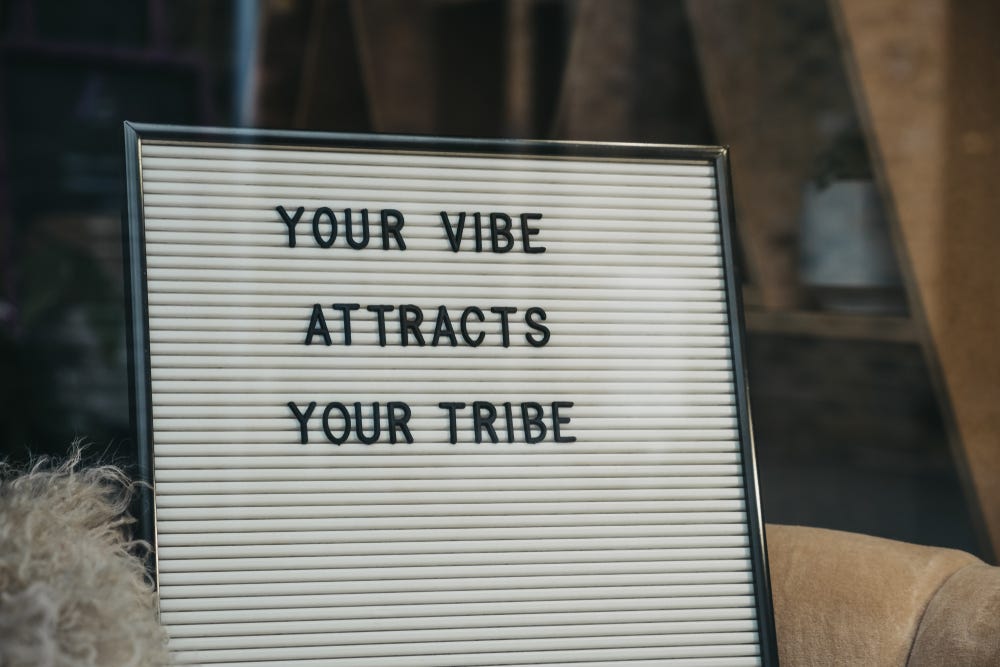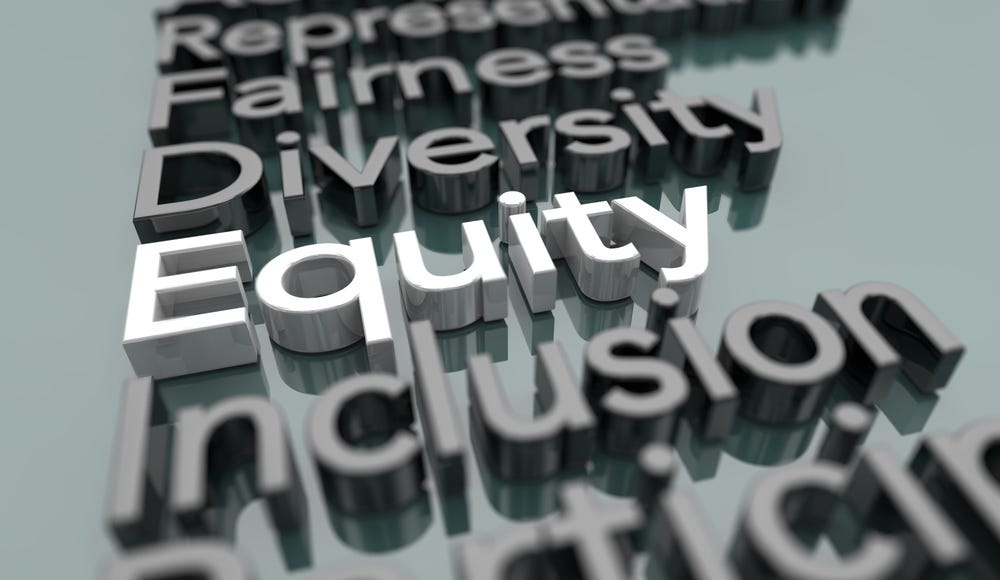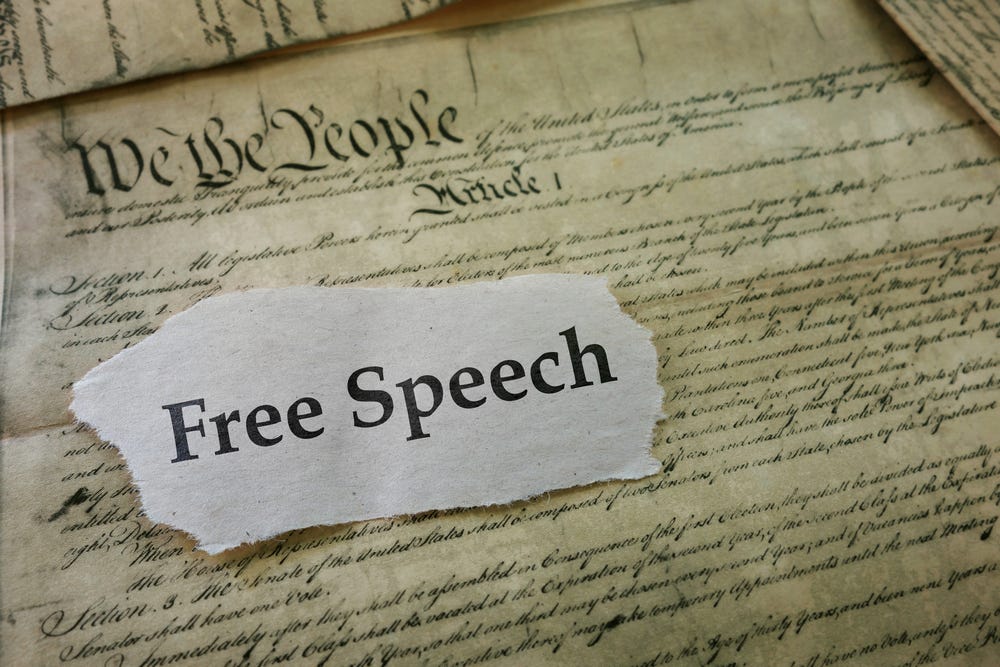E-Pluribus | April 18, 2022
Tribalism isn't all bad, what the Biden administration really means by "equity," and turning to a 1950s First Amendment champion for wisdom on free speech.
A round up of the latest and best writing and musings on the rise of illiberalism in the public discourse:
Chris Ferguson, Cory Clark, Bo Winegard, and Allen Buchanan: The Costs and Benefits of Tribalism—A Roundtable
Tribalism is more often used pejoratively, but at least some of the participants in a Quillette roundtable have some positive things to say about it. While tribalism can lead to a stubborn, defensive digging in to one’s positions, there is something to be said for tribalism’s characteristic loyalty, sense of community and shared values.
[Ferguson:] The problem with both of these dominant ideologies [far-right and far-left] is similar: both promote rather than discourage tribalism by dividing citizens into warring camps. Though often couched in moralizing language popular with their core audience, both worldviews are aggressively discriminatory, racist, classist, and ethnocentric. Neither side is especially interested in core values unless they are expedient, and each is often guilty of precisely the sins of which they accuse the other.
[ . . . ]
[Clark:] Tribalism can also undermine sound reasoning as people skillfully avoid information that could challenge their ingroup beliefs and axioms, and hold epistemic double standards in their evaluations of new information. Identity interests among scientists contribute to the proliferation of contradictory conclusions. These disagreements often devolve into uncivil and unproductive debates in the scientific literature, in which our most educated intellectuals make moral accusations rather than working to understand why disagreements persist and to resolve disputes. [ . . . ]
This all sounds bad. But tribalism (and tribalistic tendencies such as loyalty and conformity) may be essential for facilitating cooperation and coordination in large and complex social groups comprising unrelated strangers. Groups which share languages, norms, values, goals, and beliefs can more effectively coordinate to the benefit of all group members. And signaling these characteristics to others helps individuals sort into cooperative and productive groups. Identification with an ingroup can facilitate cooperation within that group and creating a common ingroup identity between groups may reduce intergroup conflict.
[ . . . ]
[Winegard:] On balance, we should applaud tribalism not condemn it. It is the solution to a fundamental dilemma faced by any social animal: How to distinguish cooperators from exploiters. At bottom, tribalism is simply a division of the social world into ingroup and outgroup with a concomitant preference for the ingroup. We tend, when we discuss tribalism, to think of potentially pernicious instances: countries battling for prestige, gangs fighting for territory, political ideologues promoting hatred of opponents. But there are many wholesome and even inspiring instances of tribalism: Church communities working together to feed the poor, husbands and wives doting on each other, cousins helping each other through financial hardships. And without the tendency to make this distinction between ingroup and outgroup, human sociality could not arise.
[ . . . ]
[Buchanan:] If you are tribalistic, you lump all opponents together, regarding them as alike, and you believe they are either incorrigibly stupid and misinformed or irredeemably corrupt and perhaps even evil. In this way, tribalism de-humanizes the outgroup, insofar as it regards them as the sorts of beings with whom one cannot reason. After all, the ability to reason is usually thought to be a hallmark of humanity, something that distinguishes us from other creatures. When one is in the tribalistic mode, one focuses on the supposed character of the speaker, not on what he or she is saying. In that sense, every tribalistic “argument” is an ad hominem argument.
Read it all here.
Rick Esenberg and Dan Lennington: Why We Must Fight Biden’s Equity Agenda
“Fairness” has long been a Democratic Party talking point, but Rick Esenberg and Dan Lennington at National Review say the current administration’s watchword is “equity.” Under the banner of fighting systemic racism, the Biden White House has attempted to institute explicit race-based criteria and quotes, something the two writers say must be defeated in order to preserve the benefit and right to equal treatment under the law for all.
Within hours of his inauguration, President Biden declared a “whole-of-government equity agenda” to remove the “unbearable human costs of systemic racism.” While the agenda sounded benign — “Equal opportunity is the bedrock of American democracy, and our diversity is one of our country’s greatest strengths” — much of it constituted a “shock and awe” program of explicit racial preferences. It has not been unusual for government, in handing out benefits and providing services, to use race as an aspirational “thumb on the scale” or to establish (or contrive) a remedial justification for its use. But government has been more reluctant to nakedly hand out things based on the color of the recipient’s skin. Following the Biden initiative, though, there seemed to be a marked departure from preferences that required some demonstration of a remedial purpose rooted in the particular circumstances of the beneficiary. “Equity,” it turns out, was simply code for reverse discrimination.
President Biden’s two signature legislative accomplishments — the American Rescue Plan Act (ARPA) and the Bipartisan Infrastructure Bill — wrote this new form of “equity” into our laws.
[ . . . ]
Make no mistake: These programs distribute tax dollars based on race, even though our Supreme Court has continued to make clear that all racial preferences are highly disfavored and subject to the strictest of scrutiny.
[ . . . ]
But as the New York Times recently reported, the Biden administration is “worried that using race to identify and help disadvantaged communities could trigger legal challenges that would stymie their efforts.” After specifically noting victories against the race-based farmer-loan-forgiveness program, the Times reports that the administration will now “step away from race.”
Read the whole thing.
Nathan Goetting: A First Amendment Giant Offers a Way Out of Our Free Speech Crisis
While there are no shortage of present day defenders of free speech, Nathan Goetting at Discourse Magazine says there are lessons to be learned from experiences of attorney and civil libertarian Thomas I. Emerson during the McCarthy era in the 20th century. Emerson laid out four benefits of free speech in his book “The System of Freedom of Expression” that are worth considering in today’s hostile environment, including (of particular note in a time of extremes) the “safety valve” benefit.
Freedom of expression is “an essential process for advancing and discovering truth,” he writes. It is indispensable to intellectual advancement. To distinguish truth from falsity, people must be able to consider every claim and keep asking questions, wherever facts and reason dictate, until they are satisfied. Even false claims can be instructive if they compel us to reexamine old beliefs and this reinforces our beliefs by giving us more confidence in their value.
[ . . . ]
Free speech is a human right and censorship is an “affront to the dignity” of the individuals being silenced, wrote Emerson. Silencing poets, musicians, filmmakers or anyone prevents them—and their listeners and viewers—from realizing their potential for happiness. “For the achievement of this self-realization the mind must be free.”
[ . . . ]
Emerson’s liberal approach to freedom of expression promotes peace and stability by giving people with unpopular political views the opportunity to nonviolently blow off steam. “People are more ready to accept decisions that go against them if they have a part in the decision-making process,” he explains.
To prevent the spread of bad ideas, the First Amendment allows for two remedies. First, while expression must always be tolerated, harmful conduct need not be. The government may punish anyone who attempts to advance dangerous ideas with criminal activity.
Second, there is counter-speech. There is no surer way to halt the spread of a bad idea than by using reason and evidence to replace it with a good one. If people find a belief to be dangerous, the First Amendment gives them the right to persuade fellow citizens not to adopt it. This is essential to the realization of the First Amendment’s Socratic and Jeffersonian purposes. “The greatest menace to freedom,” wrote former Supreme Court Justice Louis D. Brandeis, “is an inert people.” Ultimately, whether free speech endures will rest on our faith that these remedies work.
Read it all.
Around Twitter
Excerpts of a thread from Shadi Hamid based on his recent essay on how common is the “common good”?






It appears that atheists are the latest group to join the intersectionality bandwagon (with commentary from Colin Wright and Peter Boghossian):




Finally, some stark post-COVID survey results of college students’ attitudes towards their education, via Heterodox Academy and Real Clear Education:









